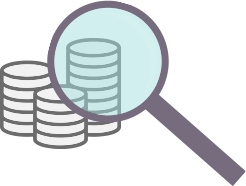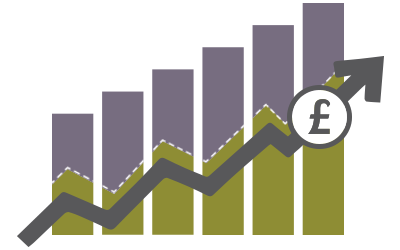Credencis Guide to Pensions
This is a guide to pensions, what you are entitled to and how saving into a particular pension type affects the options available to you.
Understanding where your money in retirement will come from
The money you take into retirement is likely to come from a variety of places. You might have worked for several different companies over your career, each with its own pension scheme. You might have built up private pensions, and there is the State Pension to consider too.
Effective planning means looking at your potential retirement income as a whole. This allows you to manage your income and budget effectively for the rest of your life. Remember that retirement isn’t about getting by – it’s about leaving work and living the lifestyle you always dreamed of.
At Credencis, we take a holistic look at your finances, using all your income streams to build a retirement plan that works for you.
Here are some of the places your retirement income might come from.


Your defined benefit scheme
If you have worked in the public sector, or you have been with one company for a long time, you might have a defined benefit (DB) pension.
DB or final salary schemes are often considered the “gold standard” among pensions. This is because of the generous benefits they offer and their competitive pay-outs compared to other types of schemes.
They are more complex to manage and less cost-effective for companies, which is why many have been replaced by defined contribution (DC) or money purchase schemes in recent years.
The retirement income you receive from your DB scheme is based on:
Your length of service
How long you have been a member of the scheme.
Your final salary
Your salary at retirement, or possibly an average salary based on all, or part, of your career.
The accrual rate
A fraction of your salary that is multiplied by your years of service to give your yearly pension.
For the below calculation, let’s assume your pension scheme uses your final salary – rather than an average – in its calculations.
Your final salary at retirement is £60,000. You have been a member of the pension scheme for 30 years and the scheme has an accrual rate of 1/60.
Years as a pension scheme member (30) x accrual rate (1/60) x salary (£60,000)
DB schemes are designed to pay a regular income in retirement. They might be considered inflexible because of this.
It is sometimes possible to transfer out of a DB scheme to access the flexible pension options available to DC schemes. This is often not the best choice but Credencis can guide you if you are contemplating a transfer out.
Defined contribution (DC) pensions
You might have DC pension funds, sometimes known as “money purchase plans”.
With this type of pension, you amass a retirement fund via the contributions you make. When you retire, the accumulated pension pot is used to “purchase” a retirement income using the option you choose.
Currently, you must be at least age 55 to access your pension fund (unless on the grounds of ill health), although the minimum retirement age rises to 57 from 2028.
The contributions you make are invested in the stock market, which means the value of your pot can rise and fall. You’ll have to keep a close eye on your fund to ensure it is on track, and that the investments match your attitude to risk, especially as your retirement date nears.
As with a DB pension, a DC scheme is designed to provide you with an income in retirement, paid for the rest of your life. However, since Pension Freedoms were introduced in 2015, you now have many options to choose from, including a one-off lump sum and flexi-access drawdown, which puts you in control of the pension income you receive.

Your State Pension
As a UK resident, you will have made National Insurance contributions (NICs) during your working life, building up an entitlement to the State Pension.
The State Pension is currently available from age 66 and, although it might not be enough to live on in retirement, it is a solid foundation from which to build a retirement plan.
To receive the full amount, you’ll need 35 qualifying years on your National Insurance record. If you have between 10 and 35 years of NICs, you’ll receive an amount based on the exact number of years you have built up. If you have less than ten years of NICs, you won’t receive any State Pension.
For the 2021/22 tax year, the full State Pension is £179.60 a week, or £9,339.20 a year. You might receive a different amount if you have built up entitlement under the pre-April 2016 system or you have ever been contracted out.
You can use the government’s website to check your National Insurance record for gaps. Plugging these might allow you to increase the amount of State Pension you receive.
The State Pension is not issued automatically; you must opt-in. You should receive the paperwork to do this as you approach State Pension Age. If you decide not to take your State Pension entitlement, it can be deferred. The amount payable will increase by 1% every 9 weeks until it is claimed.
Need Advice? We can help.
If you need advice or more information concerning pensions, please get in touch.
